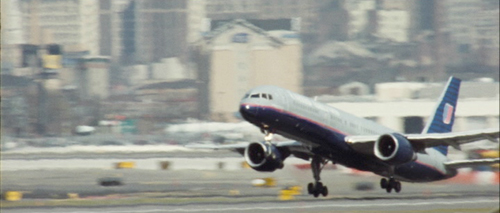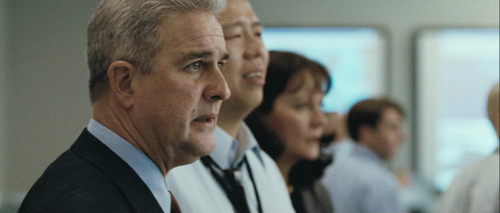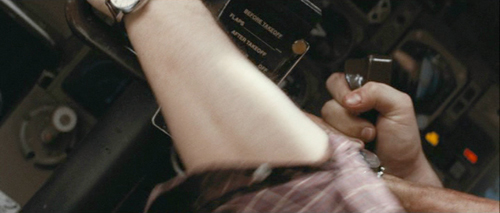 BUY IT AT AMAZON: CLICK HERE!
BUY IT AT AMAZON: CLICK HERE!
STUDIO: Universal
MSRP: $29.98
RATED: R
RUNNING TIME: 111 min.
SPECIAL FEATURES:
• United 93: The Families and the Film
• Feature Commentary with the Director
• Memorial Pages
The Pitch
I remember, I had the day off. I slept in, and at around noon Pacific Time I phoned my building super regarding a matter of deferred maintenance. He said something about New York and something about… war… and I turned on the TV. I threw a cassette in the VCR, phoned my parents, and set about contacting friends whom I knew to live on the East Coast.
I remember having what I then considered to be cynical thoughts about what actions certain politicians would soon take. I remember sitting on Indian Rock, looking out over the Bay at the Golden Gate Bridge, wondering if it could be the next target. I remember the empty sky.
And for some reason I vividly remember conversing with a fellow nerd who, as late as sundown, was completely unaware of what had happened in the outside world that day. He thought I was talking about The Two Towers.

The Humans
A large, democratic ensemble that combines career actors with professionals from the airline industry, civilian flight control, and the U.S. military. Eleven of the participants portray themselves, reenacting their own experiences. Of the ‘name’ actors, David Rasche (Sledge Hammer) stands out.
The Nutshell
Through a scenario based upon forensic evidence, ground telemetry, voice recordings, and personal recollections, United 93 reconstructs what may have transpired aboard the one hijacked plane that didn’t hit its target on September 11, 2001.
Browse Devin’s on-set coverage and interviews, at the bottom of this page. If you only have time to read one article, make it the Ben Sliney interview.
Russ’s theatrical review, HERE.

The Lowdown
What director Paul Greengrass (Bloody Sunday, The Bourne Supremacy) has done here is more along the lines of a simulation than a dramatization. He’s constructed a variety of controlled environments, and populated them with people who possess skills and characteristics that lead them to behave in certain ways when confronted with certain conditions. Greengrass rejects familiar docudrama technique; none of the characters introduce themselves or are addressed by name, and there are no helpful shots of clocks or calendars to set the scene. All we have to go on is observed behavior, and we’re left to make our own judgements. It’s the Ant Farm approach to historical modeling, and it’s fascinating to see played out.
It’s also emotionally overwhelming. I advise home viewers to resist the temptations of the Pause button.

Greengrass is careful to point out that one of the hijackers– the one with pilot training– was suspected of harboring second thoughts, which could have added to their delay. Aside from religious fervor, it’s the only element of humanity afforded to the terrorists and I think a decision should have been made either to subtitle all the Arabic dialogue or none of it. Greengrass also slips near the end with a montage of passengers, crew and hijackers praying simultaneously– the contrivance is distracting, and implies a uniform Christian faith among the otherwise diverse hostages.
The final sequence redeems everything. Following the third plane’s crash into the Pentagon, the action returns to Flight 93 and stays there. We may never know for sure what happened in the attempt to retake the cockpit, but Greengrass’ image of hands wrestling for the controls sends a clear signal– if we can’t stop fighting with each other we’ll never survive.
The Package
Greengrass’ commentary track is brisk and insightful. He doesn’t spend a lot of time identifying names and faces, or pointing out which events were documented and which were based on conjecture— you’ll have to read the 9/11 Commission Report yourself for that. His focus is on the theme of communication, and on the ways people react to things they can’t comprehend.
The Memorial Pages is a series of testimonials written by friends and relatives of the deceased.
The Families and the Film is maybe the most difficult thing to watch on the whole disc. Relatives of the victims are interviewed as they meet with the actors who portrayed their loved ones. In a couple of cases the physical resemblance is uncanny, and heartbreaking.
